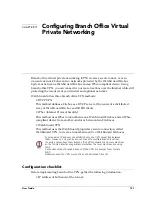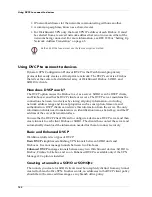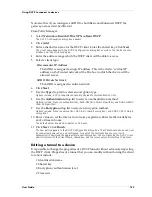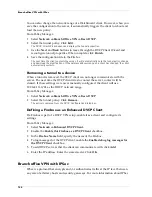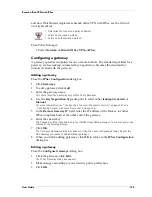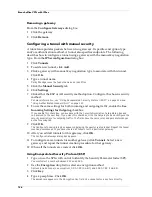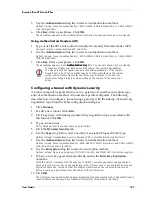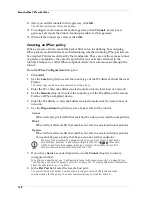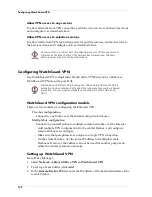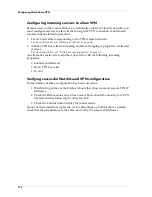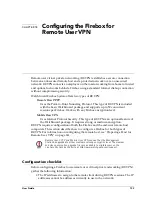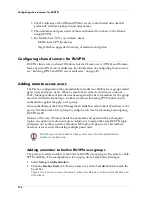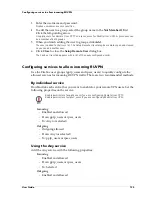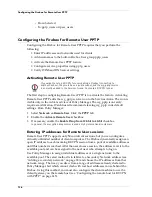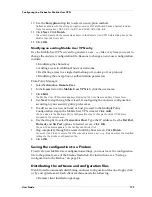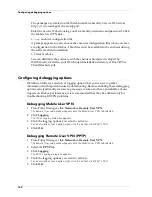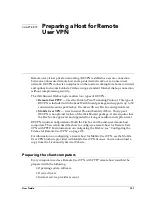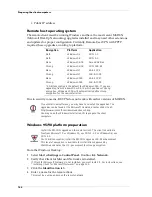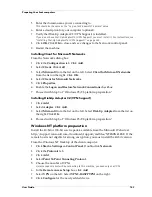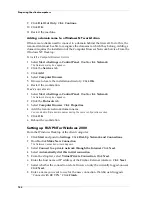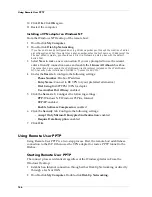
User Guide
133
CHAPTER 18
Configuring the Firebox for
Remote User VPN
Remote user virtual private networking (RUVPN) establishes a secure connection
between an unsecured remote host and a protected network over an unsecured
network. RUVPN connects an employee on the road or working from home to trusted
and optional networks behind a Firebox using a standard Internet dial-up connection
without compromising security.
WatchGuard Firebox System offers two types of RUVPN:
Remote User PPTP
Uses the Point-to-Point Tunneling Protocol. This type of RUVPN is included
with the basic WatchGuard package and supports up to 50 concurrent
sessions per Firebox. Works with any Firebox encryption level.
Mobile User VPN
Uses Internet Protocol Security. This type of RUVPN is an optional feature of
the WatchGuard package. It requires strong or medium encryption.
RUVPN requires configuration of both the Firebox and the end-user remote host
computers. This section describes how to configure a Firebox for both types of
RUVPN. For information on configuring the remote host, see “Preparing a Host for
Remote User VPN” on page 141.
Configuration checklist
Before configuring a Firebox to use remote user virtual private networking (RUVPN),
gather the following information:
• The IP addresses to assign to the remote client during RUVPN sessions. The IP
addresses cannot be addresses currently in use in the network.
Remote User PPTP and Mobile User VPN require that the Management
Station be upgraded to either medium or strong encryption level. The medium
and strong encryption upgrade files are available to eligible users on the
LiveSecurity Service Web site at http://www.watchguard.com/support.
Summary of Contents for Firebox FireboxTM System 4.6
Page 1: ...WatchGuard Firebox System User Guide Firebox System 4 6 ...
Page 16: ...6 ...
Page 20: ...LiveSecurity broadcasts 10 ...
Page 44: ...LiveSecurity Event Processor 34 ...
Page 52: ...Defining a Firebox as a DHCP server 42 ...
Page 68: ...Service precedence 58 ...
Page 78: ...Configuring a service for incoming static NAT 68 ...
Page 92: ...Establishing an OOB connection 82 ...
Page 94: ...84 ...
Page 112: ...HostWatch 102 ...
Page 118: ...Working with log files 108 ...
Page 130: ...120 ...
Page 158: ...Configuring debugging options 148 ...



